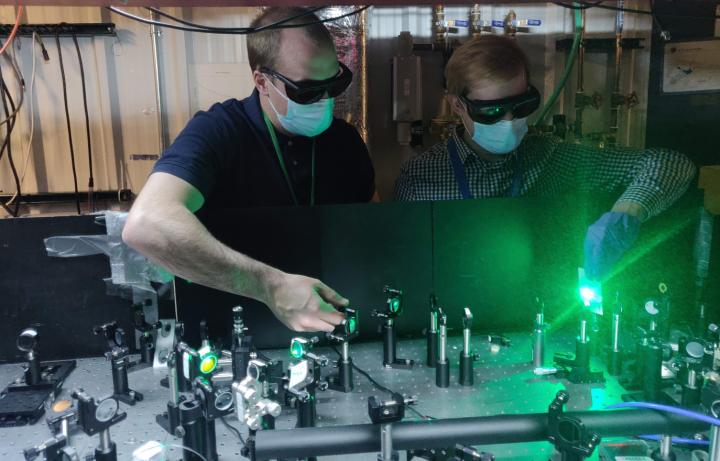New class of QDs for imaging and quantum computing

Los Alamos team show how atomically defined interlayer embedded into a quantum dot emits single photons at room temperature
A new class of quantum dots deliver a stable stream of single, spectrally tuneable infrared photons under ambient conditions and at room temperature, unlike other single photon emitters. This breakthrough opens a range of practical applications, including quantum communication, quantum metrology, medical imaging and diagnostics, and clandestine labelling.
"The demonstration of high single-photon purity in the infrared has immediate utility in areas such as quantum key distribution for secure communication," said Victor Klimov, lead author of a paper published today in Nature Nanotechnology by Los Alamos National Laboratory scientists.
The Los Alamos team has developed an elegant approach to synthesising the colloidal-nanoparticle structures derived from their prior work on visible light emitters based on a core of CdSe encased in a CdS shell. By inserting a HgS interlayer at the core/shell interface, the team turned the quantum dots into highly efficient emitters of infrared light that can be tuned to a specific wavelength.
"This new synthesis allows for highly accurate, atomic-level control of the thickness of the emitting HgS interlayer. By changing it in increments of a single atomic layer, we can tune the wavelength of the emitted light in discrete quantized jumps, and further adjust it in a more continuous fashion by tuning the cadmium selenide core size," said Vladimir Sayevich, the lead chemist on this project.
Far superior to existing near-infrared quantum dots, these new structures show "blinking-free" emission at a single-dot level, nearly perfect single-photon purity at room temperature (which produces "quantum light"), and fast emission rates. They behave extremely well with both optical and electrical excitation.
Single photons can be used as qubits in quantum computing. In a cybersecurity application, single photons can protect a computer network through quantum key distribution, which provides ultimate security through "unbreakable" quantum protocols.
Bio-imaging is another important application. The emission wavelength of the newly developed quantum dots is within the near-infrared bio-transparency window, which makes them well suited for deep tissue imaging.
People can't see infrared light, but many modern technologies rely on it, from night-vision devices and remote sensing to telecommunications and biomedical imaging. Infrared light is also a big player in emerging quantum technologies that rely on the duality of light particles, or photons, which can also behave as waves. Exploiting this quantum property requires sources of "quantum light" that emit light in the form of individual quanta, or photons.
"There is also a cool chemical element in achieving single-atomic layer accuracy in making these dots," said Zack Robinson, the project member focusing on quantum dot spectroscopy. "The thickness of the emitting HgS interlayer is identical across all dots in the samples. That's very unique, especially for a material made chemically in a beaker."
Klimov added, "However, this is just the first step. In order to take full advantage of 'quantum light' one needs to achieve photon indistinguishability, that is, to make sure that all emitted photons are quantum-mechanically identical. This is an extremely difficult task, which we will tackle next in our project."
'Highly versatile near-infrared emitters based on an atomically defined HgS interlayer embedded into a CdSe/CdS quantum dot' by Vladimir Sayevich et al; Nature Nanotechnology 2021


































